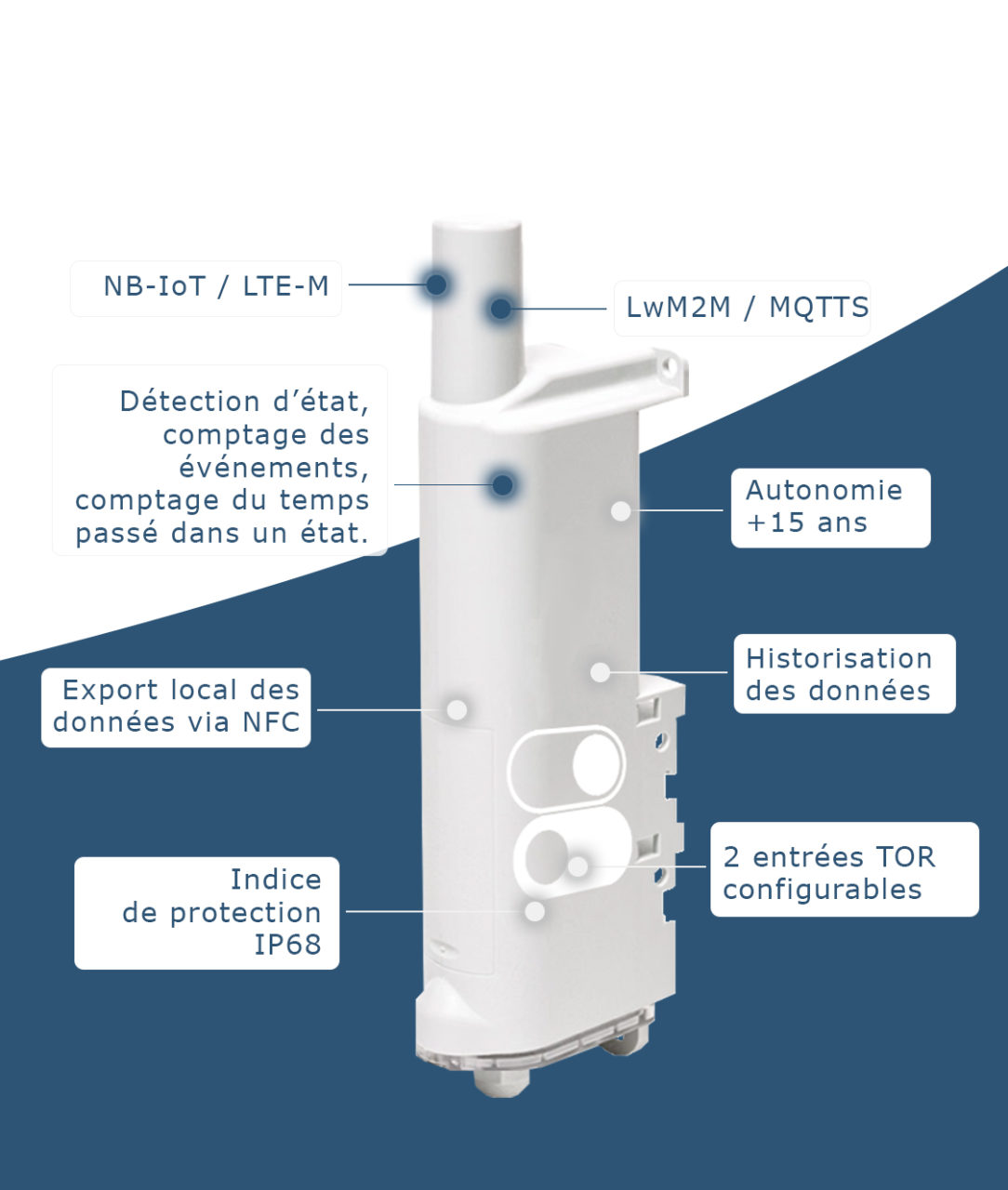The building sector is undergoing a revolution, driven by the need to reduce its environmental impact and improve occupant comfort. In response to these challenges, a variety of sustainable building labels and certifications have emerged, each providing specific standards in terms of sustainability, energy efficiency, well-being and building intelligence. Certifications such as HQE, BREEAM, WELL, LEED, BBCA, SmartScore and R2S help to structure and validate the efforts of building professionals.
But these building labels and certifications do more than just set ambitious targets: they increasingly incorporate the use of advanced technologies, particularly IoT sensors, to measure, analyse and optimise building performance in real time.
Find out how these labels and certifications can transform your construction, renovation or operating projects into true models of sustainability and innovation.
1- General building labels and certifications
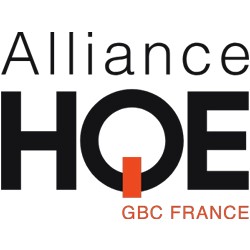
HQE (High Environmental Quality)
HQE (Haute Qualité Environnementale) certification is the French benchmark for sustainable construction. Initiated by the HQE Association, this certification aims to improve the environmental performance of buildings by taking into account their entire life cycle.
The HQE certification commitments are:
- Respect for the environment
- Quality of life
- Economic performance
- Responsible management
To obtain HQE certification, a building must meet several requirements:
Energy: efficient energy management, reduced energy consumption, and use of renewable energies.
Environment: reducing the ecological footprint, sustainable management of resources (water, materials, waste), and preserving biodiversity.
Health: indoor air quality, selection of healthy materials, control of noise pollution.
Comfort: thermal and visual comfort, acoustic comfort, and facilities to enhance occupant well-being.
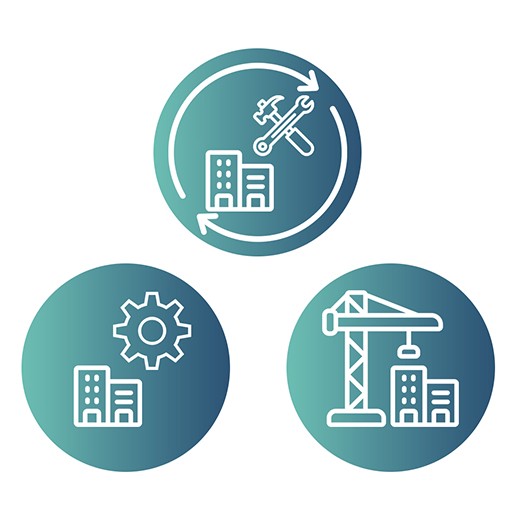

Residential buildings

Commercial buildings
666 648 000 m2
HQE-certified residential and commercial buildings worldwide (12/2023)
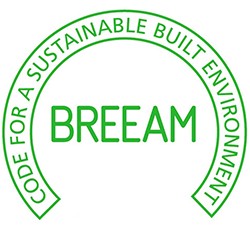
BREEAM (Building Research Establishment Environmental Assessment Method)
BREEAM certification is one of the most widely recognised and used methods of assessing the environmental performance of buildings worldwide. Developed by the Building Research Establishment (BRE) in the UK in 1990, it sets high standards for the sustainability of buildings.
The main objectives of BREEAM certification are to:
- Encouraging sustainable design, construction and operation practices.
- Reducing the environmental impact of buildings.
- Improving the health and well-being of occupants.
- Promoting cost-effective and viable solutions for energy efficiency and resource management.

To achieve BREEAM certification, a building must meet a series of requirements divided into 10 categories, each of which is assessed and graded according to specific criteria:
Management: sustainable project management processes, stakeholder engagement and environmental risk management.
Health and well-being: indoor air quality, thermal and acoustic comfort, natural and artificial lighting quality.
Energy: energy efficiency, reduction of CO2 emissions, use of renewable energies.
Transport: accessibility to public transport, sustainable mobility solutions.
Water: efficient water management, reducing water consumption.
Materials: choosing sustainable materials with low environmental impact, and managing construction waste.
Waste: reduction of the waste generated by the building, introduction of recycling and reuse systems.
Land use and ecology: protection of biodiversity, sustainable management of land and green spaces.
Pollution: reducing pollutant emissions, managing noise and light pollution.
Innovation: implementation of innovative solutions to improve the sustainability of the building.
All types of building
535 000
certified buildings worldwide
74
present in 74 countries
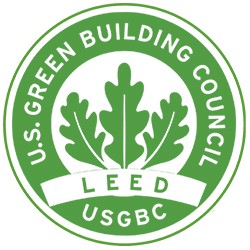
LEED (Leadership in Energy and Environmental Design)
LEED, is an international certification created by the US Green Building Council (USGBC) in the United States. Launched in 1998, LEED is recognised worldwide as a benchmark standard for the design, construction and operation of sustainable, energy-efficient buildings.
The main objectives of LEED certification are to:
- Promoting sustainable and environmentally friendly construction practices.
- Improving energy efficiency and reducing CO2 emissions from buildings.
- Promoting the health and well-being of occupants.
- Optimising the use of natural resources and reducing waste.

To obtain LEED certification, a building must meet a set of criteria divided into several categories, each contributing to the awarding of points to determine the level of certification (Certified, Silver, Gold, or Platinum):
Location and transport: accessibility to public transport, and facilities to encourage soft mobility (bicycles, pedestrians).
Sustainable sites: reducing the impact on ecosystems and water resources, managing rainwater and green spaces.
Water management: reducing water consumption, and efficient use of water resources.
Energy and atmosphere: energy efficiency of buildings, use of renewable energies, energy performance management.
Materials and resources: use of sustainable materials with low environmental impact, management of construction and operating waste.
Indoor environmental quality: improving indoor air quality, controlling lighting and thermal and acoustic comfort.
Innovation: integration of innovative solutions for building sustainability, and performance beyond minimum requirements.*
Regional priority: adaptation to the environmental challenges specific to the region in which the building is located.

All types of building
+ 105 000
certified buildings worldwide by 2023
185
Present in 185 countries
2 - Building labels and certifications for comfort and well-being
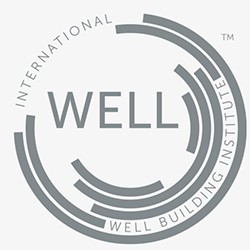
WELL
WELL certification is a globally recognised rating system that focuses on the impact of buildings on the health and well-being of their occupants. Developed by the International WELL Building Institute (IWBI) and launched in 2014, WELL highlights design and construction practices that promote healthy and comfortable environments.
The main objectives of WELL certification are to:
- Promoting healthy working and living environments.
- Improving the quality of air, water and the indoor environment.
- Optimising the physical and mental well-being of occupants.
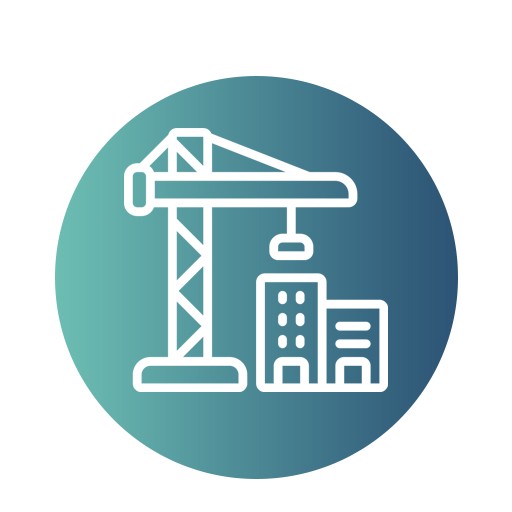
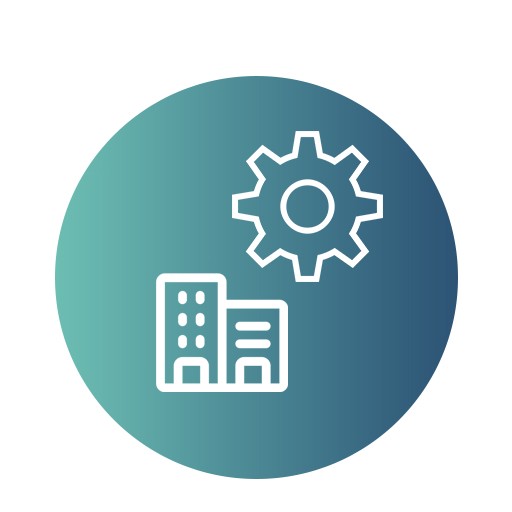
To obtain WELL certification, a building must meet a series of requirements divided into 10 main concepts:
Air: control of pollution sources, indoor air quality, effective ventilation and filtration systems.
Water: quality of drinking water, availability of drinking water, monitoring and maintenance of water systems.
Food: access to healthy food options, promotion of a balanced diet, nutritional education.
Light: adequate natural and artificial lighting, daylight management, and circadian lighting to support biological rhythms.
Movement: encouraging physical activity, designing spaces that incite movement, fitness facilities and support for physical activity.
Thermal comfort: maintaining comfortable temperatures, humidity control, efficient heating and cooling systems.
Sound: management of noise pollution, acoustic comfort, and use of appropriate acoustic materials.
Materials: selection of healthy materials, management of contaminants in materials, transparency of ingredients in materials.
Mental health: spaces that promote mental well-being, mental health support programmes, and biophilic design incorporating natural elements.
Community: encouraging social interaction, wellbeing policies for occupants, promoting diversity and inclusion.

All types of building
+ 36 000
WELL supports health and well-being in over 33,000 locations
120
Active in nearly 100 countries
3 - Energy
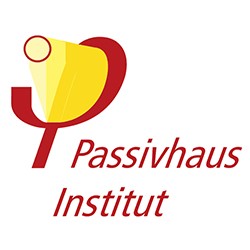
PASSIVHAUS
Passivhaus certification is a building standard focused on energy efficiency and thermal comfort. Developed in Germany in the 1990s by the Passivhaus Institut, this certification is now recognised worldwide for its rigorous standards aimed at drastically reducing the energy consumption of buildings.
The main objectives of Passivhaus certification are to:
- Reduce the energy consumption of buildings to very low levels.
- Ensure optimum thermal comfort throughout the year.
- Minimise the ecological footprint of buildings.
To obtain Passivhaus certification, a building must meet several strict criteria:
Heating energy consumption: limited to a maximum of 15 kWh per square metre per year.
Primary energy consumption: total primary energy consumption (heating, hot water, electricity) is limited to a maximum of 120 kWh per square metre per year.
Airtightness: compulsory Blower Door Test with an n50 air exchange rate of no more than 0.6 per hour.
Thermal comfort: comfortable indoor temperatures throughout the year, with minimal variations.
Thermal insulation: use of high-performance insulation materials to reduce heat loss.
Controlled ventilation with heat recovery: mechanical ventilation systems with heat recovery to ensure optimum indoor air quality while minimising energy losses.


Individual and collective residential housing
Building intended for public use
41000
certified buildings worldwide
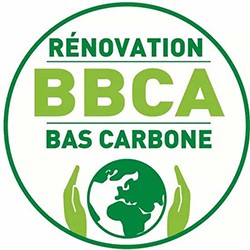
BBCA (Low Carbon Building)
BBCA certification, is a French initiative created by the Association pour le Développement du Bâtiment Bas Carbone (BBCA) in 2016. It aims to assess and promote low-carbon buildings throughout their lifecycle, including construction, operation and end-of-life.
The main objectives of BBCA certification are to:
- Reducing the carbon footprint of buildings.
- Encouraging the use of low-carbon materials and construction techniques.
- Encouraging the circular economy and sustainable resource management.
- Promoting environmentally friendly construction and renovation practices.
To obtain BBCA certification, a building must meet several key criteria:
Carbon emissions during construction: calculation and reduction of CO2 emissions linked to materials and the construction phase, use of materials with a low carbon footprint (wood, recycled materials).
Carbon emissions during operation: optimising energy efficiency to reduce emissions during the operating phase, integrating renewable energy production solutions (solar panels, geothermal energy).
Avoided emissions: implementation of solutions to offset or further reduce emissions (green roofs, carbon offsetting solutions).
Circular economy: adoption of practices that incite recycling, reuse of materials and sustainable waste management, design that encourages disassembly and reuse of building components.


Commercial buildings

Residential buildings
+ 300
Since 2016, almost 300 projects have been committed, totalling more than 2.05 million m2. (2022)
2,05M
Since 2016, almost 300 projects have been launched, totalling more than 2.05 million m2.(2022)
4 - Building labels and certifications for intelligent buildings
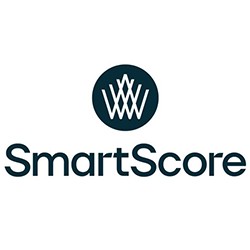
SMART SCORE
SmartScore certification is a global certification programme that assesses the intelligence of buildings. Developed by WiredScore, the organisation behind the WiredScore certification for digital connectivity in buildings, SmartScore focuses on the implementation of intelligent technologies to improve performance and user experience.
The main objectives of SmartScore certification are to:
- Promoting the adoption of intelligent technologies in buildings.
- Improving the operational performance of buildings.
- Optimising the user experience in terms of comfort, safety and productivity.
- Supporting environmental sustainability through innovative technological solutions.

To obtain SmartScore certification, a building must meet a number of requirements divided into several categories:
Core technologies: robust connectivity infrastructure (wired and wireless networks), advanced building management systems (BMS).
Safety and security: intelligent surveillance and access control systems, cybersecurity solutions to protect occupants’ data.
Sustainability and energy efficiency: real-time energy and water management solutions, integration of technologies to optimise energy consumption.
User experience: digital applications and services to improve occupant comfort and productivity, flexible and adaptive workspaces using intelligent technologies.
Innovation: adoption of emerging and innovative technologies to meet future needs, ability to integrate new technological solutions over time.

Various types of building
15%
15% reduction in carbon footprint: The technological solutions integrated into SmartScore-certified buildings contribute to a significant reduction in carbon footprint.
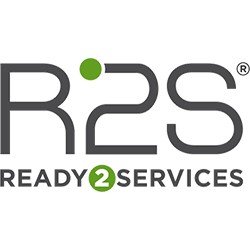
R2S (Ready2Services)
R2S or Ready2Services, is a French certification dedicated to connected and intelligent buildings. Developed by the Smart Buildings Alliance for Smart Cities (SBA) in collaboration with Certivéa, R2S aims to promote the integration of digital services in buildings to improve their performance and the well-being of occupants.
The main objectives of R2S certification are to:
- Facilitating the integration of digital services in buildings.
- Improving the connectivity and interoperability of building systems.
- Promoting sustainability and energy efficiency through intelligent technologies.
- Ensuring the comfort, safety and health of occupants through digital solutions.

To obtain R2S certification, a building must meet several criteria grouped into five main areas:
Digital infrastructures: robust and reliable communication networks (fibre optics, Wi-Fi), and infrastructure systems enabling equipment interoperability.
Digital services: integration of digital services for managing energy, water, security and comfort, intelligent building management platforms for automation and remote control.
Security and data protection: implementation of cybersecurity measures to protect building systems data, digital access and identity management.
Sustainability and energy efficiency: real-time energy management solutions, integration of sensors and control systems to optimise resource consumption.
Occupant comfort and well-being: systems to control air quality, thermal comfort and lighting, digital applications and services to enhance the user experience (smartphone apps, intuitive user interfaces).

Mainly office buildings
100
buildings certified in the first two years (2021)
1,7 M
square metres certified in the first two years (2021)
4 - How IoT sensors can help you comply with these labels and certifications
Building labels and certifications play a crucial role in promoting sustainable practices, energy efficiency and occupant well-being. HQE, BREEAM, WELL, LEED, Passivhaus, BBCA, SmartScore, and R2S are not just standards to be achieved but guides that direct every stage of the construction, renovation and operation of buildings. By incorporating these building certifications, professionals in the sector can not only meet regulatory requirements and customer expectations, but also anticipate future challenges.
With the rise of intelligent technologies and IoT sensors, it is now possible to continuously monitor and optimise the performance of buildings, guaranteeing healthy, comfortable and environmentally friendly environments.
In particular, these sensors enable optimised energy management, by monitoring consumption and detecting inefficiencies, which is crucial to achieving sustainability and energy efficiency standards. In addition, they can provide accurate monitoring of air quality, temperature and humidity, helping to create healthy and comfortable indoor environments. By monitoring telecom infrastructures and ensuring reliable connectivity, IoT sensors also play a key role in modernising buildings to meet current and future technological needs. By integrating these advanced technologies, buildings can not only comply with rigorous certification criteria but also offer superior performance in terms of sustainability, occupant well-being and resource management.
15/07/2024
20 years
expertise to support you, from the diagnosis to the implementation of your solution


